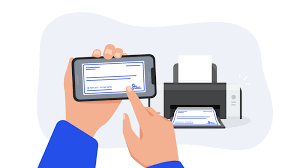Implementing digital checksinto your company’s operations will significantly increase efficiency and simplify financial transactions. As technology improves, digital checks offer a modern solution to traditional paper checks, providing numerous benefits like faster processing time and reduced administration costs. This step-by-step guide will help you implement digital checks effectively in your company.
1. Choose the Right Digital Check Platform
Start by selecting a reliable digital checks platform that’s compatible with your company’s requirements. Look for a provider with strong security features, a user-friendly interface, and integration capabilities with your existing system for accounting and financials. Platforms like QuickBooks, PayPal, or specialized digital check services offer varying capabilities, so select one that is compatible with your business requirements.
2. Set Up Your Digital Check System
Once you’ve decided on the platform you want to use, you need to set up your digital check system. This requires configuring your account, logging in your business details as well as setting up digital check template. Customize the templates with your business logo and information to maintain a professional appearance. Ensure that all necessary security measures, such as encryption and digital signatures, are in place to safeguard your transactions.
3. Train Your Team
A successful implementation will require that your team is familiar with the new procedure. Provide training sessions to train your employees on how to make, send, and manage digital checks. Provide clear guidelines on security procedures and the proper handling of digital check information. This will help minimize errors and will ensure that the transition is smooth into the brand new technology.
4. Transition Gradually
Instead of a full-scale switch, think about the gradual change. Start by implementing digital checks for a specific set of transactions or vendors. Follow the process carefully to spot any problems and gather feedback from your team. This phased approach allows you to resolve any problems prior to fully committing digital checks.
Conclusion
The implementation of digital checks in your business operations can improve efficiency while also reducing costs. It can also increase security. By choosing the right platform, training your team, transitioning gradually and ensuring you are following the most secure methods, you can successfully incorporate digital checks into your financial workflow. This new method not only makes transactions easier but also positions your business in the forefront of financial efficiency and technological advancement.
